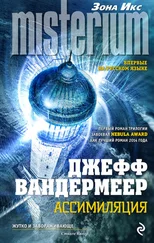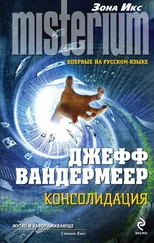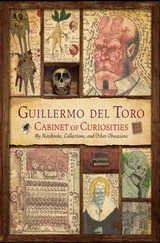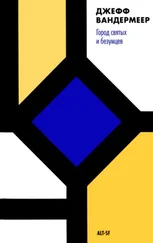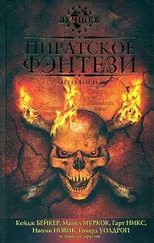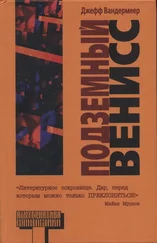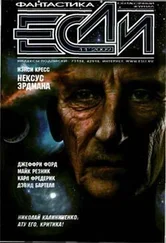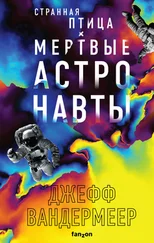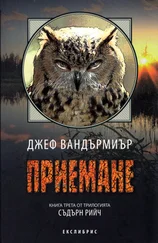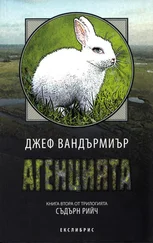Джефф Вандермеер - The Thackery T. Lambshead Cabinet of Curiosities
Здесь есть возможность читать онлайн «Джефф Вандермеер - The Thackery T. Lambshead Cabinet of Curiosities» весь текст электронной книги совершенно бесплатно (целиком полную версию без сокращений). В некоторых случаях можно слушать аудио, скачать через торрент в формате fb2 и присутствует краткое содержание. Жанр: Фэнтези, на английском языке. Описание произведения, (предисловие) а так же отзывы посетителей доступны на портале библиотеки ЛибКат.
- Название:The Thackery T. Lambshead Cabinet of Curiosities
- Автор:
- Жанр:
- Год:неизвестен
- ISBN:нет данных
- Рейтинг книги:5 / 5. Голосов: 1
-
Избранное:Добавить в избранное
- Отзывы:
-
Ваша оценка:
- 100
- 1
- 2
- 3
- 4
- 5
The Thackery T. Lambshead Cabinet of Curiosities: краткое содержание, описание и аннотация
Предлагаем к чтению аннотацию, описание, краткое содержание или предисловие (зависит от того, что написал сам автор книги «The Thackery T. Lambshead Cabinet of Curiosities»). Если вы не нашли необходимую информацию о книге — напишите в комментариях, мы постараемся отыскать её.
The Thackery T. Lambshead Cabinet of Curiosities — читать онлайн бесплатно полную книгу (весь текст) целиком
Ниже представлен текст книги, разбитый по страницам. Система сохранения места последней прочитанной страницы, позволяет с удобством читать онлайн бесплатно книгу «The Thackery T. Lambshead Cabinet of Curiosities», без необходимости каждый раз заново искать на чём Вы остановились. Поставьте закладку, и сможете в любой момент перейти на страницу, на которой закончили чтение.
Интервал:
Закладка:
When he’s gone, the wretched not-rat beast scrambles up to the man with the open book, and they whisper to one another. Then the man looks directly at me, and his eyes flash red-gold in the gloom, the way a cat’s eyes will. He says, in English, “Heaven dost provide for all its children.” I’m so scared, I finally do turn around, meaning to run back to the cellar or sea cave, whichever, because anything’s better than this. But the hole in the granite wall is gone, and I’m trapped there. I slam my fists against the rock, over and over.
It shouldn’t surprise you that I hardly sleep. . . .
Excerpt from a postcard found among the effects of Ms. Margaret H. Jacobs (7 Exegesis Street, Cincinnati, Ohio) following her suicide, from Lambshead, dated July 10, 1981 (postmarked July 13):
. . . can assure you, Ms. Jacobs, the letter in question did not come from my solicitors. I’ve inquired regarding this matter, and they’ve sent no such letter to you. Which is not surprising, as they aren’t in the habit of taking such action unless I’ve requested that they do so. However, this said, I do think we might both be happier if these reports of yours ceased. I don’t know what to make of them, and while I am obviously sorry if your visit set these unpleasant dreams in motion, I am not trained in psychoanalysis, and you’d be better served . . .
Excerpt from the obituary of Margaret Harriet Jacobs, The Cincinnati Post, July 8, 1981:
. . . a respected teacher and scholar, she was a tenured professor of Political Science at the McMicken College of Arts and Sciences, University of Cincinnati. She is survived by her sister, Dorothy Frost (née Jacobs), and her brother, Harold Jacobs. In lieu of flowers the family prefers memorial donations in the deceased’s name to the Cincinnati chapter of the American Foundation for Suicide Prevention. Condolences may be expressed at . . .
Taking the Rats to Riga
A Critical Examination of Stigmata’s Print
By Jay Lake
Perhaps the most quotidian detail of the print Taking the Rats to Riga (1969) is the eponymous rats themselves. This is somewhat uncharacteristic of the work of the artist Stigmata (b. Crispus Chang-Evans, Nanking, China, 1942; d. Khyber Pass, Pakistan, 1992). The artist was notorious for eschewing both representation and naturalism, noting in a 1967 interview with Andy Warhol, “The dial ain’t set on sketch, and I’ll never be a d**ned camera” ( artINterCHANGE; vol. III, no. 4; 1968).
The unusual inclusion of such readily identifiable elements strongly hints that Rats is based on an actual event. The precise nature of this event is obscured by our distance in time from the origins of this print, as well as Stigmata’s notoriously poor record-keeping. Lambshead’s own acquisition notes on the print are strangely sparse as well. Art world rumor whispers that the print depicts a scene from Karneval der Naviscaputer, an occasional festival of deviant performance art held within East Berlin’s underground club culture during the mid-to-late 1960s.
The astute observer would do well to attempt deconstruction of some of the other elements in Rats . Art unexamined is, after all, art unexperienced. In this case, even a close examination is unlikely to reveal the mundane truths behind the print. The emotive truths are, however, most certainly available.
Consider the chain that the rats are climbing. Why do they ascend? From where have they come? A hook dangles or swings not far below the lower rat. It appears ornamented in both shape and detail. Bejeweled, this cannot be an artefact of the working man. Nor does it conform to the Continental notion of kunstbrukt, that design should be both beautiful and functional. This hook is curious and attractive, but hardly something to lift a bale of opium from the decks of a shabby Ceylonese trawler. One must also consider the possibility hinted at in the print’s title, that these are the plague rats Renfield carries into the world for his master Dracula, as depicted repeatedly in cinema.
Examine the chain itself. In Stigmata’s rendering, this could just as easily be a motorcycle chain as a cargo chain or an anchor chain. Were that to be the case, we might assume the rats were being drawn upward, toward the top verge of the image. The dynamism of their forms suggests that they are more than mere passengers. Still, is that no different from a man walking up an escalator?
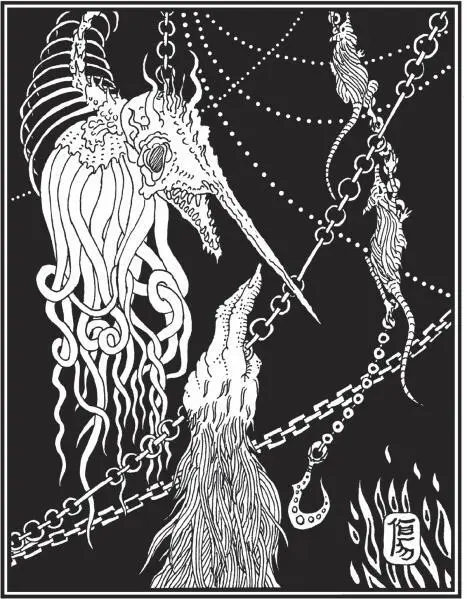
Taking the Rats to Riga , by Stigmata (1969); image from the collection of Eric Schaller.
Once we have evaluated the context in which the rats appear, the image begins to lose its coherence. Most observers consider the smaller lines in the background to be more distant chains of the same sort the rats are climbing, but Priest has advanced the argument that those may be strings of lightbulbs ( Struggles in European Aesthetics, Eden Moore Press, London, 1978). Her assertion is undercut by the strong front lighting on the primary figures in the composition, but given Stigmata’s well-documented disregard for artistic convention, this is an inherently irresolvable issue.
The most visually dominant element in Rats is the tentacled skeleton in the left side of the image. Sarcastically dubbed “The Devil Dog” in a critical essay by Robyn ( Contemporary Images, Malachite Books, Ann Arbor, 1975), this name has stuck, and is sometimes misattributed as Stigmata’s title for the work. In stark contrast with the climbing rats, there is nothing natural or realistic about the Devil Dog. Rather, it combines elements of fictional nightmare ranging from Lovecraft’s imaginary Cthulhu mythos to the classic Satanic imagery of Christian art.
Priest (op. cit.) nevertheless suggests that the Devil Dog may, in fact, be representational. Presuming even a grain of truth, this theory could represent the source of Lambshead’s interest in acquiring Rats for his collection, given the doctor’s well-known dedication to his own extensive wunderkammer. It is difficult for the observer to seriously credit Priest’s notion, however, as she advances no reasonable theory as to what creature or artefact the Devil Dog could represent. She simply uses scare words such as “mutant” and “chimera” without substantiation. The burden of proof for such an outlandish assertion lies very strongly with the theorist, not with her critics.
Robyn and other observers have offered the far simpler hypothesis that the Devil Dog is an expression of Stigmata’s own deeper fears. The open jaw seems almost to have been caught in the act of speech. While the eyes are vacant, the detail along the center line of the skull and above the orbitals can be interpreted as flames rather than horns or spurs. For a deep analysis of this interpretation, see Abraham ( Oops, I Ate the Rainbow: Challenges of Visual Metaphor, University of New Mexico Press, Albuquerque, 1986). The tentacles dangle, horrifying yet not precisely threatening to either the artist or the observer. Rising above and behind is an empty rib cage—heartless, gutless, a body devoid of those things that make us real. This is a monster that shames but does not shamble, that bites but does not shit, that writhes but does not grasp.
The most important element in Rats is, without a doubt, the hand rising up to brush at the Devil Dog’s prominent, stabbing beak. It is undeniably primate, and equally so undeniably inhuman. Still, a strong critical consensus prevails that this is Stigmata’s own hand intruding to touch the engine of his fear. While the rats seek to escape up their chain, this long-fingered ape reaches deeper into the illuminated shadows, touching the locus of terror without quite grasping it. The parallels to Michelangelo’s Creation of Adam (ca. 1511) are inescapable and disturbing. Who is creating whom here? Is Stigmata being brought to life by his own fears? Or does he birth them into this print, as so many artists do, to release his creation on an unsuspecting world?
Читать дальшеИнтервал:
Закладка:
Похожие книги на «The Thackery T. Lambshead Cabinet of Curiosities»
Представляем Вашему вниманию похожие книги на «The Thackery T. Lambshead Cabinet of Curiosities» списком для выбора. Мы отобрали схожую по названию и смыслу литературу в надежде предоставить читателям больше вариантов отыскать новые, интересные, ещё непрочитанные произведения.
Обсуждение, отзывы о книге «The Thackery T. Lambshead Cabinet of Curiosities» и просто собственные мнения читателей. Оставьте ваши комментарии, напишите, что Вы думаете о произведении, его смысле или главных героях. Укажите что конкретно понравилось, а что нет, и почему Вы так считаете.

